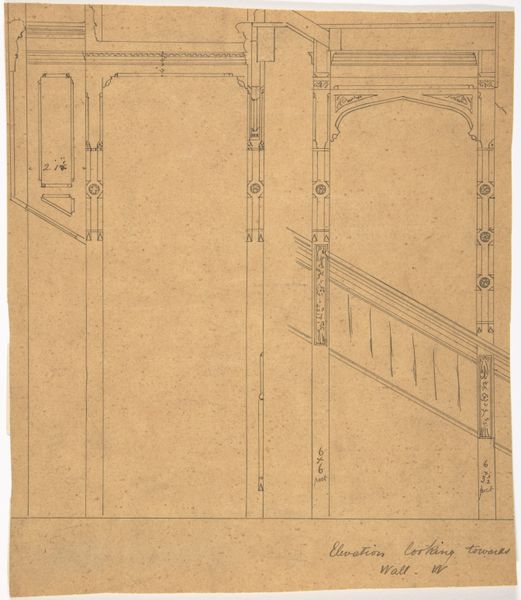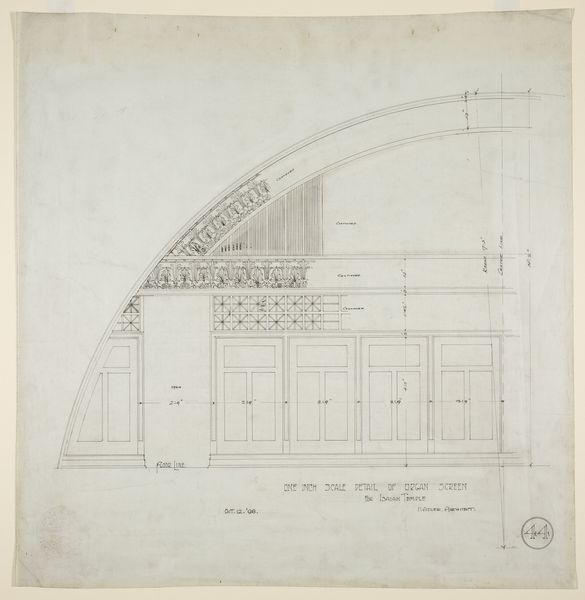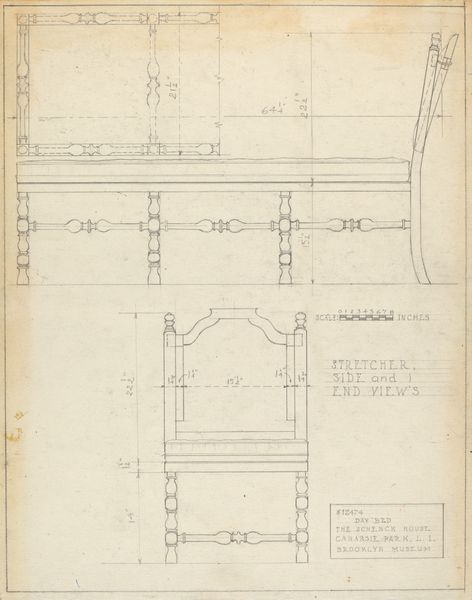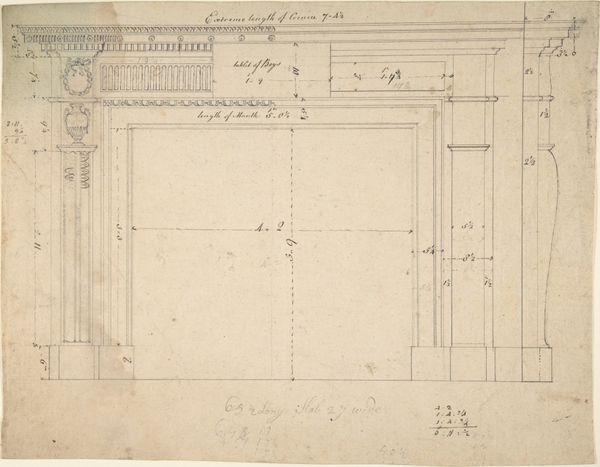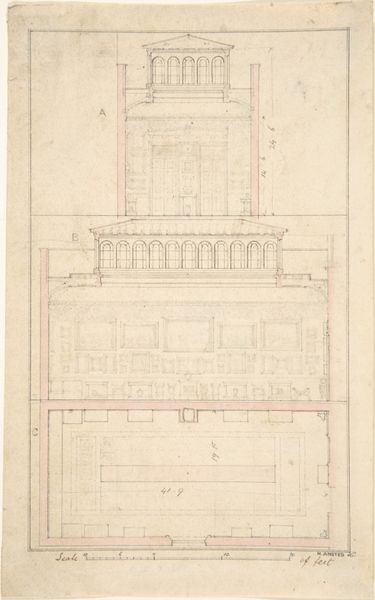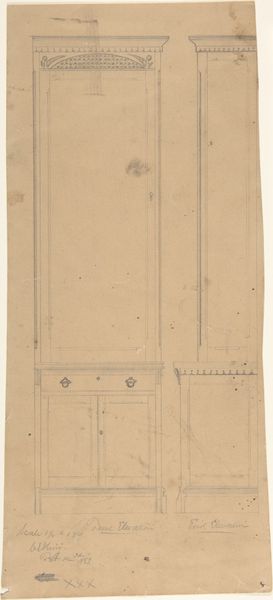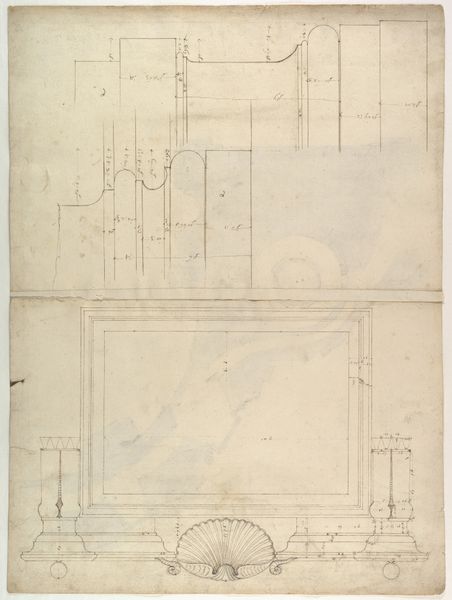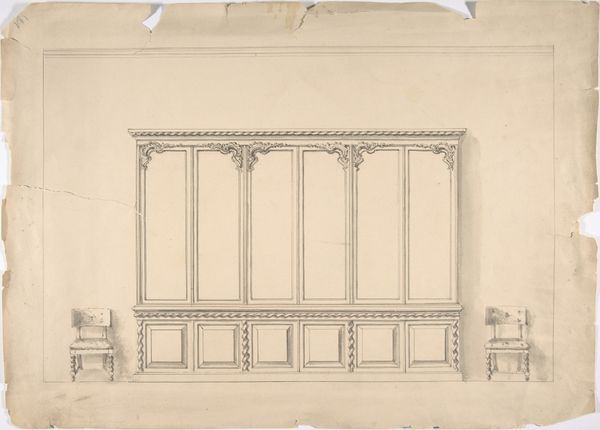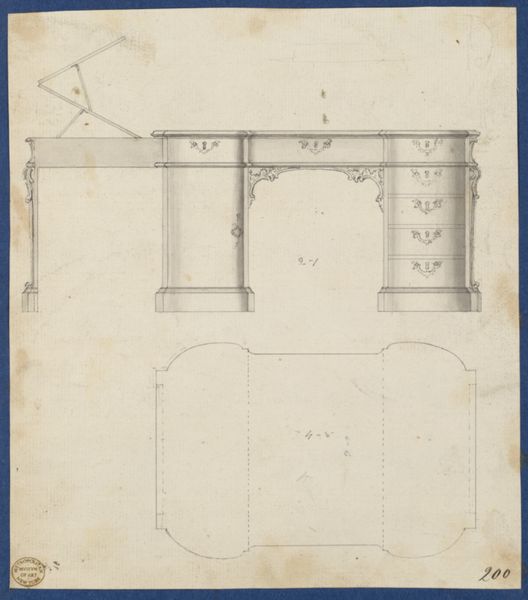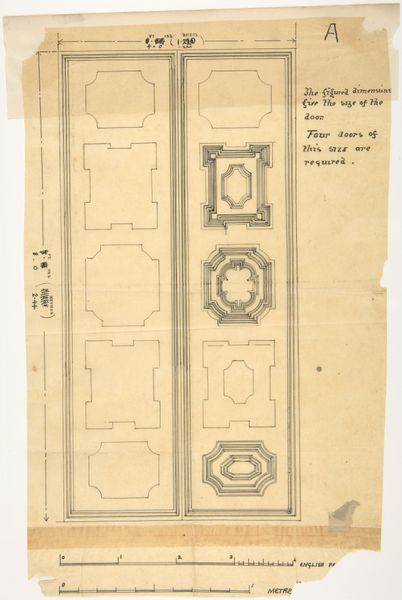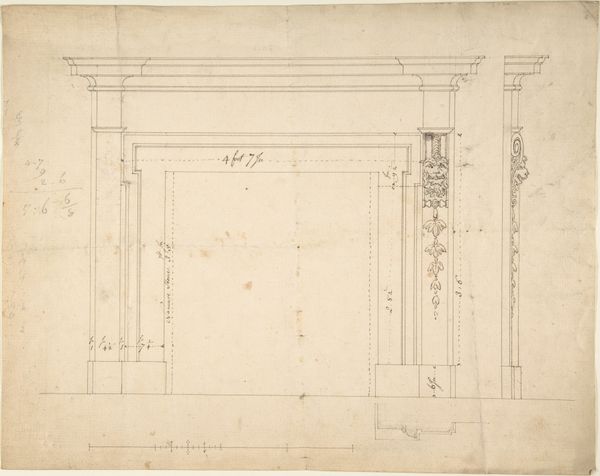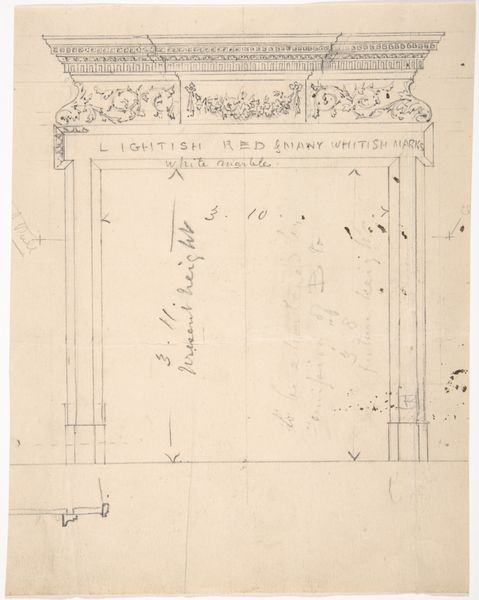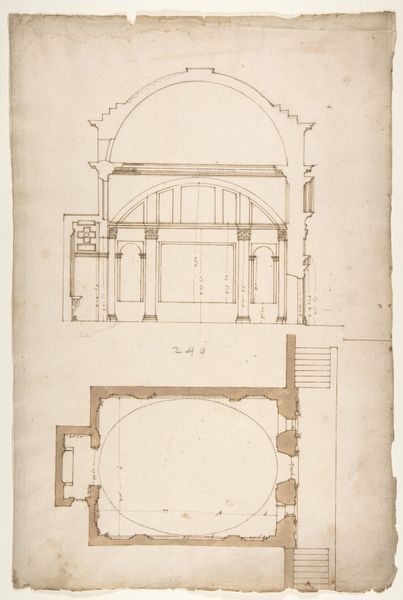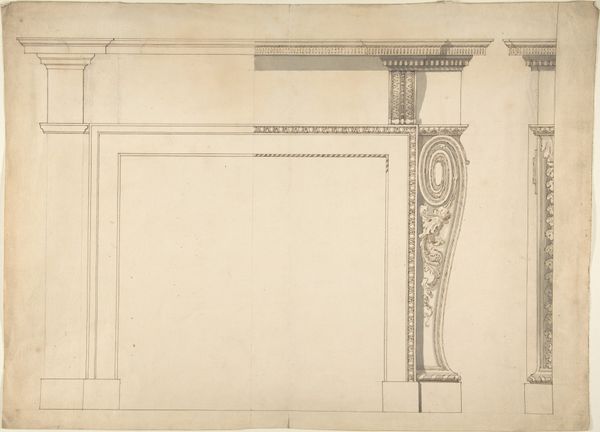
drawing, print, etching, paper, ink, architecture
#
drawing
# print
#
etching
#
etching
#
paper
#
ink
#
architecture
Copyright: Public Domain
Editor: This is "Staircase Lobby Design," an etching made with ink on paper, sometime in the 1800s by an anonymous artist, currently at the Metropolitan Museum of Art. It feels almost like a blueprint. How do you interpret this work? Curator: This etching presents more than just an architectural design; it’s a coded narrative about power and social hierarchy during the 19th century. Who was meant to ascend this staircase? Consider how architectural spaces can dictate movement and interaction, reflecting and reinforcing existing power structures. Editor: So, the design itself promotes inequality? Curator: Precisely. Look at the grandeur implied in the design. The meticulous detail suggests this was not meant for just anyone. These staircases often separated social classes, restricting access based on status and gender. What feelings does the symmetry evoke? Does it feel welcoming? Editor: I see what you mean. It feels very formal and imposing. Less about welcome and more about…regulation? Curator: Yes, that’s it! And let's consider the absence of figures. Is that a deliberate erasure? Or is it about a future that's yet to happen. What purpose does this space fulfill? What about the people inhabiting this staircase? These missing perspectives can unveil hidden histories, reflecting those often marginalized by conventional historical narratives. Editor: I had not considered it from that point of view! It adds layers of social meaning I hadn't recognized. Curator: It’s about asking questions. Architecture isn't neutral; it embodies choices about who matters and who doesn’t. Keep questioning the spaces around you. Editor: This has changed how I view not only this piece but all architectural design! I'll definitely carry that with me. Curator: Wonderful! Always seek the stories within the structure.
Comments
No comments
Be the first to comment and join the conversation on the ultimate creative platform.
